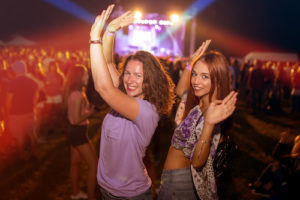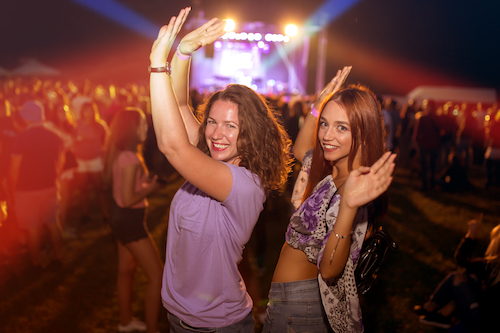 Every fall, I have the privilege of teaching a project-based seminar to a group of budding music entrepreneurs at the Yale School of Music. The class, Creating Value Through Innovative Collaborative Projects (Music 621a), addresses the problem of how to keep classical music alive and vital in our culture. My goal is to equip my students with leadership and innovation tools so that they can lead the way in addressing the big issues facing the arts. One problem that each class grapples with is how to attract today’s audience to classical music.
Every fall, I have the privilege of teaching a project-based seminar to a group of budding music entrepreneurs at the Yale School of Music. The class, Creating Value Through Innovative Collaborative Projects (Music 621a), addresses the problem of how to keep classical music alive and vital in our culture. My goal is to equip my students with leadership and innovation tools so that they can lead the way in addressing the big issues facing the arts. One problem that each class grapples with is how to attract today’s audience to classical music.
Every year, students work collaboratively on projects that address different aspects of the classical music ecosystem.Our focus this year is on meeting the needs of today’s audience and how classical music can satisfy these needs. My students this semester include musicians from the Yale School of Music, as well as a student from Yale School of Drama and another graduate student in international development. The blend of experience among the students makes this year’s class an especially rich learning environment.
Today’s Audience: What Do They Need and Like?
In my first class, we addressed the changing nature of today’s audience based on a number of recent research studies. These reports reveal the following trends:
- Attendance at classical music events is declining.
The National Endowment for the Arts has been tracking audience participation in the arts since 2002. Its latest report, published in 2015, attests to the decline in attendance at classical music events.
- Today’s audiences want more fun, new experiences and less stress
These findings come from the research firm La Placa Cohen, a strategy, marketing, and design firm for the creative and cultural worlds. The firm prepares a Culture Track Report with insights on today’s audiences. Here are some of the findings from its most recent Culture Track report in 2017.
Today’s audiences view culture as “anything from Caravaggio to Coachella, Tannhäuser to taco trucks.” They are also “experience omnivores” and seek out experiences that meet their needs.
Here’s why today’s audiences make cultural events a part of their lives:
- Entertainment and enjoyment 81%
- Interest in the content 78%
- Experience new things 76%
- Experience less stress 76%
- Learning something new 71%
- Millennial audiences want special experiences in the company of friends
The Wallace Foundation has invested $52 million over six years in research as part of its Building Audiences for Sustainability effort. The recent report “Building Millennial Audiences” elaborates on how to capture today’s audience of millennials:
- Create social events:
In many instances, millennials prefer to attend events with groups of friends that allow for interaction with their peers.
- Be clear on pricing:
Millennials will spend money on events that they know they will enjoy. However, if they are not sure about an event, they will not spend as much.
- Provide new experiences and a release from stress:
Similar to the LaPlaca Cohen findings, millennials seek experiences that “challenge them emotionally and intellectually, encourage self-discovery, and offer them a release from the stresses of everyday life.”
- Aim for “buzz-worthy” events that today’s millennial audiences can share on social media
- Market by focusing on how events fill millennials’ needs
What’s the Ideal Classical Music Experience for Today’s Audience?
With this background in mind, we devoted time in our first class to discussing these findings. We focused on today’s audience of millennials since these are the peers of our students. We then did an in-class brainstorming activity to come up with the ideal classical music event for today’s audience of millennials. Each group focused on a different aspect of an event. Here are the results of our brainstorm:
- Venue:
The ideal venue is casual and comfortable. The audience can easily mingle with the performers and with each other. The dress code is relaxed, both for performers and for audiences.
- Accessibility:
The venue is centrally located and easily accessible to public transportation.
- Program Content:
The goal is to provide a fun, intellectually challenging and emotionally satisfying learning experience. The music program includes interactive content to engage the audience and shows the relevance of classical music to the lives of today’s audience.
- Amenities:
To enhance the fun and social aspect of the experience, the venue provides food and drink during the performance.
- Pricing:
The experience is reasonably priced and competitive with other non-classical music events that attract today’s audience of millennials.
- Marketing:
Marketing materials should portray the program as a fun, new and exciting learning experience that is social, interactive and reasonably priced.
Emerging Project Ideas
In our class discussion, students were eager to delve into how to make classical music events more relevant and accessible to today’s audience. That became the focus of the right projects to explore this issue.
Here are the 3 project areas that my students will be working on this semester:
- Informal concerts for Yale University’s non-music Graduate and Professional Students
- Music and Wellness for students at Yale who consume or produce music
- An interactive opera styled as a “Choose Your Own Adventure” for teens, millennials and their parents.
Next time: How we deepened and developed our projects

